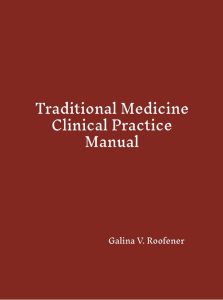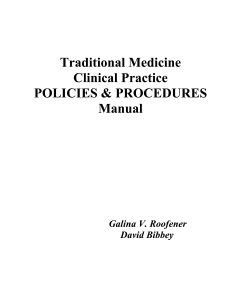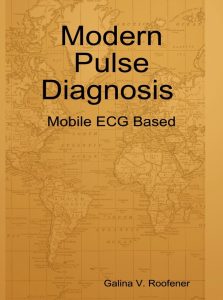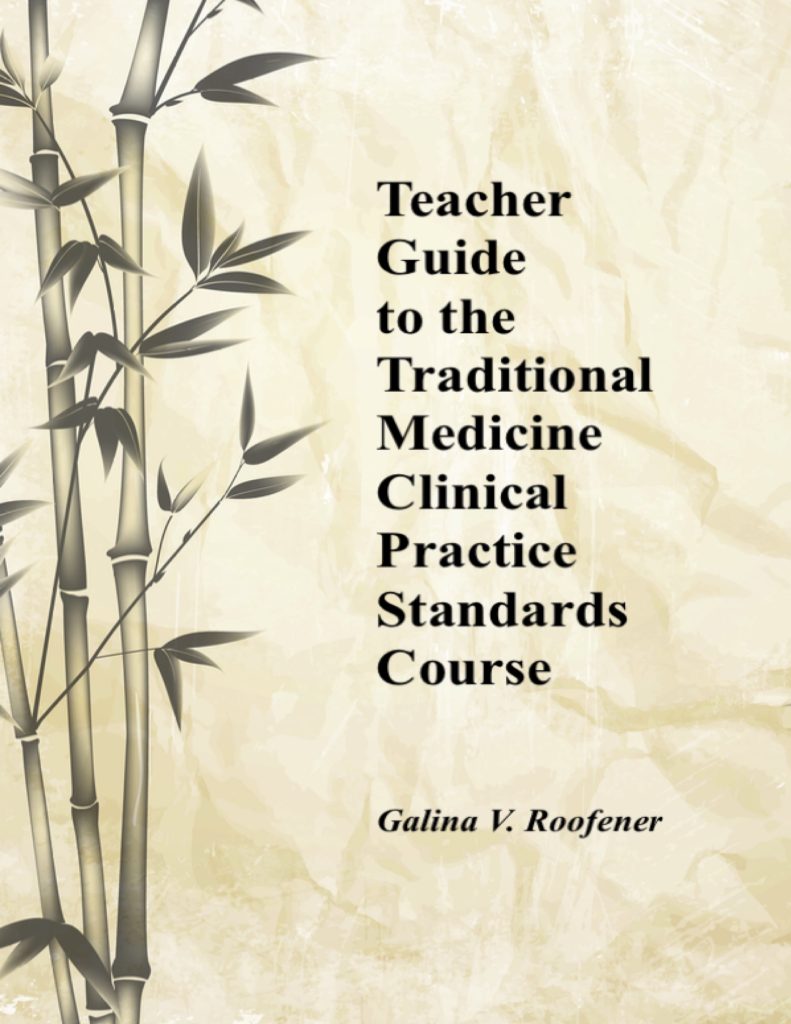The Traditional Medicine Clinical Practice Manual is designed for licensed acupuncturists and students of Eastern medicine. This much needed textbook bridges the gap between outstanding clinicians and successful business owners. It equips readers with the knowledge and practical skills necessary to secure and maintain gainful employment as an integral part of the United States healthcare system or to establish and expand their private practice.
You will learn the standards of practice that comply with the rules and regulations of the United States healthcare industry. Recent changes in CMS documentation guidelines are discussed in detail. The application of the ICD-11 Chapter 26 Traditional Medicine standardized terminology pattern differentiation in current clinical practice for both TCM and non-TCM styles of acupuncture will be explained. You will discover how to determine appropriate care pathways, support medical necessity, and substantiate the number of acupuncture CPT units utilized. Explore how to formulate and code both conventional and TCM diagnoses accurately. Navigate the process of identifying, reporting, and mitigating adverse events. Understand when and how to order laboratory tests and imaging studies. Learn how to bill insurance and get paid reliably. Master the art of writing medical necessity and appeal letters.
This book thoroughly describes FDA and HIPPA guidelines for clinical practice and patient communication. It also discusses the ADA, the Fraud Act, the Kickback Statutes, and other rules and regulations that impact your practice. You will learn how to establish usual and customary fees correctly and identify which discounts are legal. You will also explore how to operate a Telehealth practice, demystify customer service, and navigate acupuncture clinic and traditional Chinese herbal medicine logistics. This book paves your pathway to success.
TESTIMONIALS
“Traditional Medicine Clinical Practice Manual” is the missing link for practitioners of Traditional Chinese Medicine (TCM), bridging the gap between passing board exams and actually building a successful practice. G. Roofener provides essential guidance on the practicalities of opening and running a business compliant to United States best practice requirements while staying true to the principles of our medicine. As a recent graduate, I found her insights for navigating the healthcare system in America invaluable in preparing for real-world challenges that were never covered in school. This book should be a mandatory part of every TCM program, equipping future practitioners with the knowledge and confidence to thrive beyond the classroom.” – Kristen M. Hill, AP, Dipl. O.M.
This is a downloadable and customizable templates of Documentation, Policies, and Procedures for your practice. This manual is a companion volume to the Traditional Medicine Clinical Practice Manual textbook. Policies and Procedures always are in the development process, this download includes one year subscription. During this year, you will receive all updates to the purchased manual without additional charge. Please click on each item below to open the content.
- HIPAA Privacy & Security Manual
- Red Book
- Emergency Response Manual
- Employee Handbook
- Office Policies & Procedures Manual
- Clinic Policies & Procedures Manual
Most of these policies and procedures are mandatory for all healthcare practices, even if your practice has only you and nobody else.
This textbook is intended for individuals familiar with the theory and clinical practice of East Asian medicine and illustrates a modern perspective on describing the TCM pulse through the interpretation of mobile ECG data.
Palpation of the pulse is one of the important diagnostic signs used by East Asian medicine practitioners to determine the state of Qi in the body. Reading a pulse traditionally relies upon developing refined palpation skills through extensive practice guided by a skilled teacher, which can be challenging to attain and master.
Recent developments in mobile electrocardiogram (ECG) devices provide an excellent resource for practitioners to have a convenient and affordable tool for an objective pulse measure. Qi is an electric impulse that commands the heart chambers to contract that subsequently generates the pulse.
An ECG can be taken by a patient at home and transmitted to a practitioner. Recordable and reproducible objective data such as an ECG for the pulse and a photograph of the tongue is a major breakthrough in the development of East Asian Medicine. These advances open a possibility of telemedicine for Traditional Chinese Herbal Medicine practice.
This book will teach you how to interpret ECG graphs, such as the examples below, according to TCM theory.
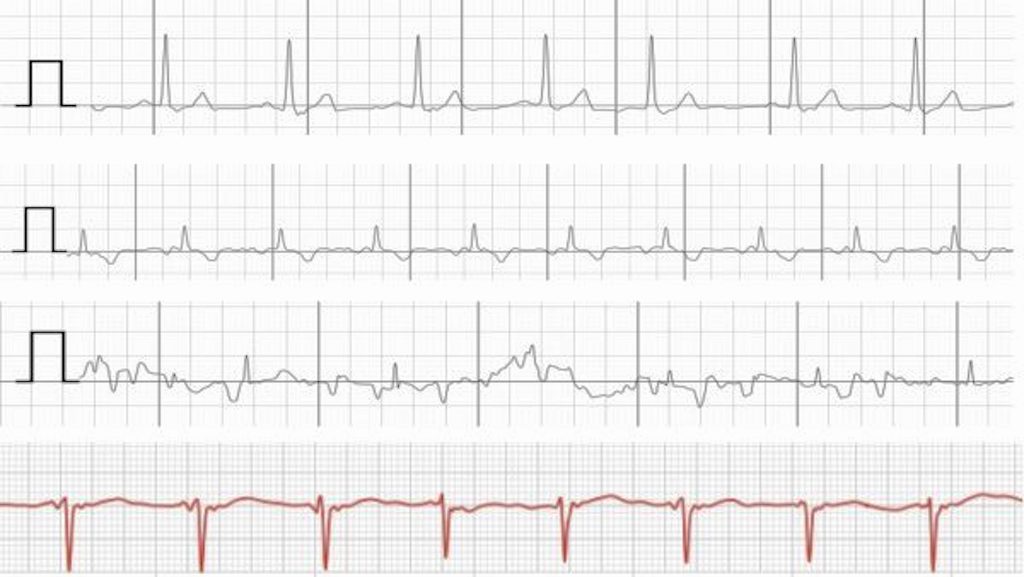
TESTIMONIALS
This book is clear, informative, and useful. As an acupuncturist, I’m glad to better understand the application of ECG diagnostic tools. This will help me offer better care and have a better understanding of my patients’ results. It is also wonderful to have a better understanding of the overlap of diagnostic methods. Thank you for this book! Jared West L.Ac.
The Teacher Guide to the Traditional Medicine Clinical Practice Standards Course is designed for Acupuncture and Herbal Medicine Colleges and is available for download in customizable Word format.
This guide provides minute-by-minute schedule for 90 hours of lectures at the suggested semesters, including syllabi, homework assignments and exams. The initial and re-evaluation SOAP notes and Business plan examples are included.
Course Purpose:
- To provide knowledge of the clinical and administrative sides of business.
- To provide the knowledge compliant with clinical and legal standards of practice necessary for gainful employment and success in private practice.
- To reinforce the best practice documentation guidelines. The need is apparent from the Veterans Administration (VA) community-acupuncturists’ audit results (76% of acupuncturists could not support insurance claims).
The course is designed to meet the following college needs in students’ training:
Prepare new acupuncture program leader (private practice or hospital/integrative medicine clinic) – The acupuncturist equipped with the skills to approach hospital administrators with a complete credentialing and business plan for acupuncture services startup, including:
- Knowledge of accreditation guidelines
- Knowledge of financial market analysis
- Capable of designing a standardized, profitable practice model outline, one-on-one and community style
- Proficient in standardized TCM healthcare records, compliant with conventional medicine, legal and billing requirements
- Knowledge of Standards for Reporting Interventions in Clinical Trials of Acupuncture (STRICTA)
Prepare employees for an established acupuncture program/ practice – The acupuncturist equipped with the skills to work as a part of the team, including:
- Well-trained in the standards of healthcare documentation
- Proficient in the EMR/EHR medical records system
- Trained in medical ethics and communication
- Well-trained in the referral guidelines
- Well-trained in evidence-based acupuncture and TCHM guidelines
- Well-trained in supporting medical necessity to ensure compliance with insurance documentation requirements
- Well-trained in recognition and prevention of acupuncture and TCHM Adverse Events
Additional materials required for this course:
- Traditional Medicine Clinical Practice Manual
- Traditional Medicine Clinical Practice Policies & Procedures Manual

